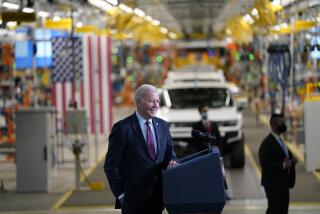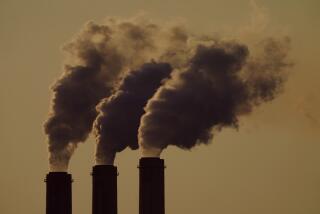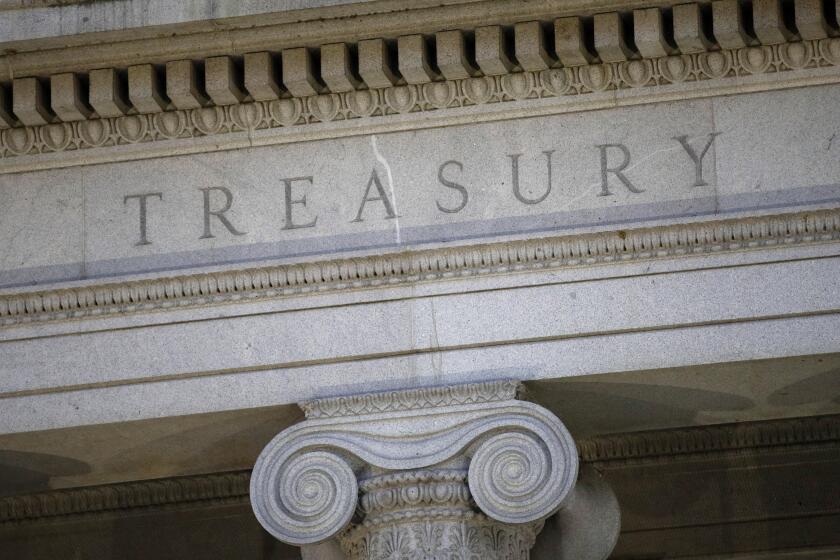Obama’s choices to lead EPA and Energy reflect his climate views
WASHINGTON — President Obama picked a chief for the Environmental Protection Agency who has long worked on combating climate change and an Energy Department secretary closely associated with increasing use of natural gas and renewable energy, further signaling his intention to take on global warming, although not as dramatically as some activists would like.
“They’re going to be making sure that we’re investing in American energy, that we’re doing everything that we can to combat the threat of climate change, that we’re going to be creating jobs and economic opportunity,” Obama said at a White House news conference Monday as he introduced his EPA nominee, Gina McCarthy, and his choice for Energy, Ernest J. Moniz.
Moniz and McCarthy, along with Sally Jewell, the chief executive of REI chosen by Obama earlier to lead the Interior Department, share important traits, say industry and environmental experts. Each is pragmatic and has extensive experience dealing with groups whose interests are often at odds.
“None are flamethrowers,” said Eileen Claussen, president of the Center for Climate and Energy Solutions, a Washington think tank. “I know Gina and Ernie very well, and they are very interested in other points of view.”
McCarthy, 58, would oversee an EPA that is expected to issue groundbreaking, controversial regulations on greenhouse gas emissions from new power plants within the next few months. She also would have to decide whether to issue new rules to cover existing plants, which would greatly limit emissions of greenhouse gases but would face strong opposition from the coal industry and others.
As head of the EPA’s Office of Air and Radiation, McCarthy played a major role in crafting a 2009 plan to boost fuel efficiency of new cars. The effort required extensive negotiations among representatives of the White House, the auto industry, states like California, environmentalists and the United Auto Workers union.
In 2011, the EPA rolled out a second phase of mileage standards that would increase average fuel economy to 54.5 miles per gallon by 2025. Under McCarthy, the air office also issued unprecedented rules to curtail emissions of mercury and carbon dioxide from new power plants.
She has previous experience working for Republicans, including Mitt Romney when he was governor of Massachusetts. Nonetheless, her nomination is likely to draw fire from congressional Republicans who, over the last four years, have attacked the EPA’s new regulations to cut air pollution and emissions of greenhouse gases as job killers. Some industry representatives, however, said they appreciated McCarthy’s willingness to listen and compromise, even when her office issued tough rules.
At the Energy Department, Moniz will be asked to find ways to boost renewable energy growth with far fewer resources than his predecessor, Steven Chu, who oversaw billions in economic stimulus funds, said Joshua Freed, director of the clean energy program at Third Way, a Washington research group oriented toward moderate Democrats.
In the Clinton administration, Moniz worked as undersecretary of the Energy Department and, before that, as associate director for science in the Office of Science and Technology Policy in the White House. During the Obama administration, Moniz has been a member of the President’s Council of Advisors on Science and Technology.
A physics professor at MIT, Moniz leads the Energy Initiative, which pursues research into fossil fuels and renewable energy. Because some of the world’s biggest oil and gas companies, including BP, Chevron and ENI, fund the Energy Initiative, some environmentalists have voiced skepticism about Moniz’s commitment to combating climate change. They have also raised questions about whether his embrace of natural gas as cleaner than coal would make him less likely to back research into renewable energy.
Moniz has spoken of the urgency of combating global warming while taking a middle-of-the-road view of natural gas — similar to views expressed by Obama, which sometimes anger industry and environmental hard-liners.
In 2011 Senate testimony, Moniz described natural gas as a “bridge” to fuels that would do less damage to the climate. That view puts him at odds with environmentalists who eschew gas. But he also acknowledged the environmental risks that widespread natural gas development poses, including possible water and air pollution.
“In considering these risks, the MIT analysis concluded that they are ‘challenging but manageable.’” Moniz testified.
More to Read
Start your day right
Sign up for Essential California for news, features and recommendations from the L.A. Times and beyond in your inbox six days a week.
You may occasionally receive promotional content from the Los Angeles Times.







